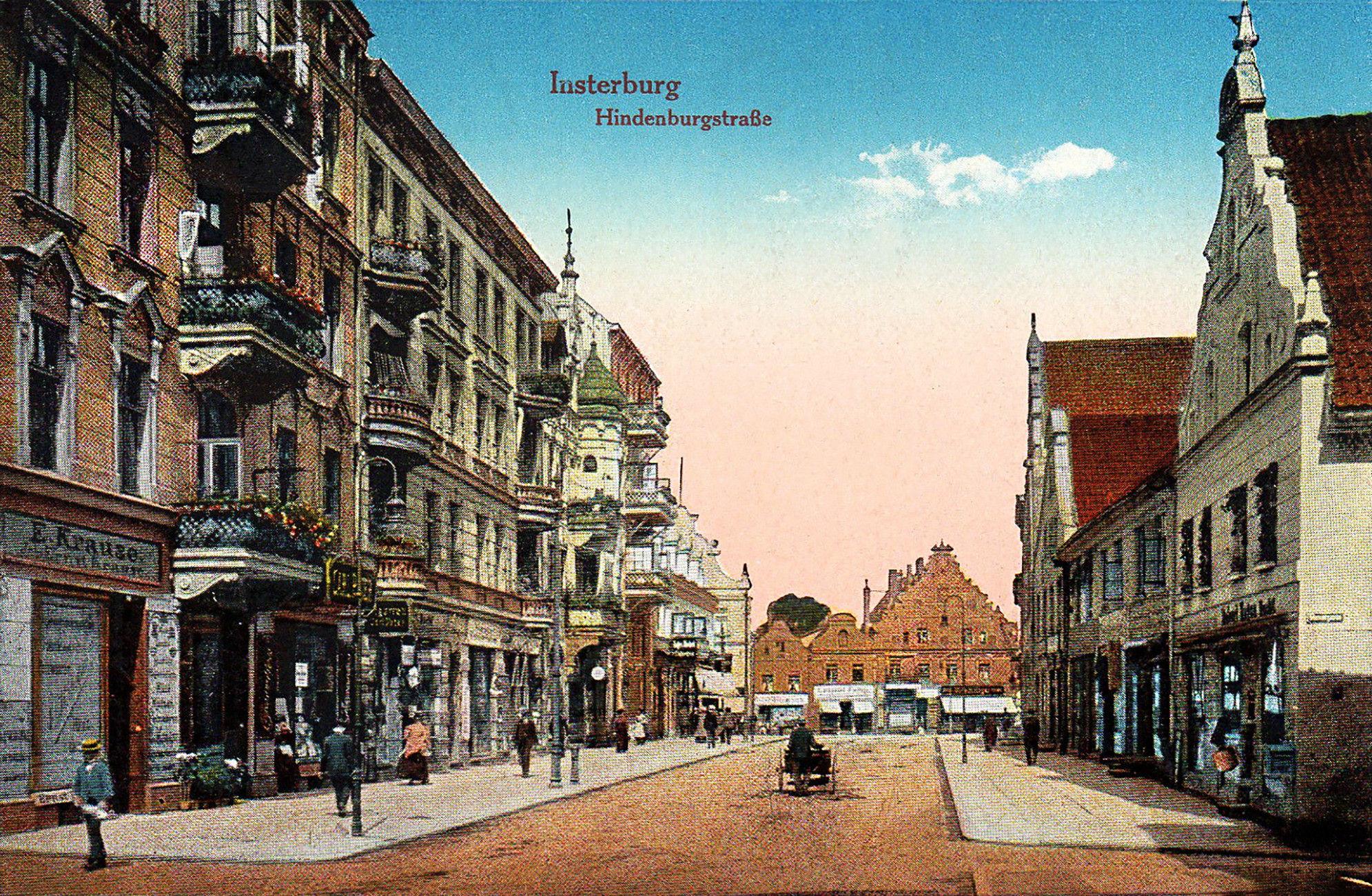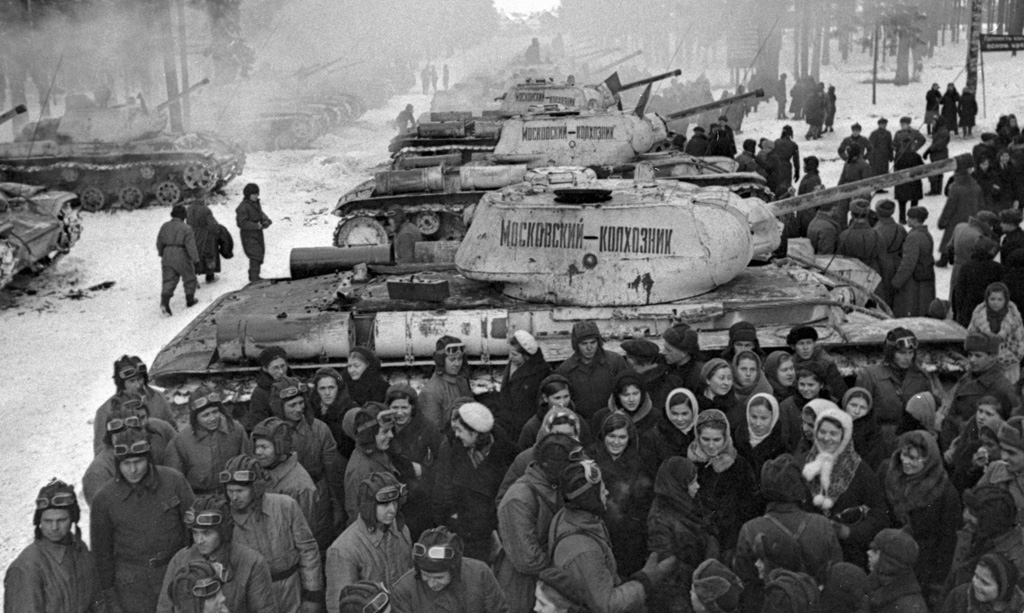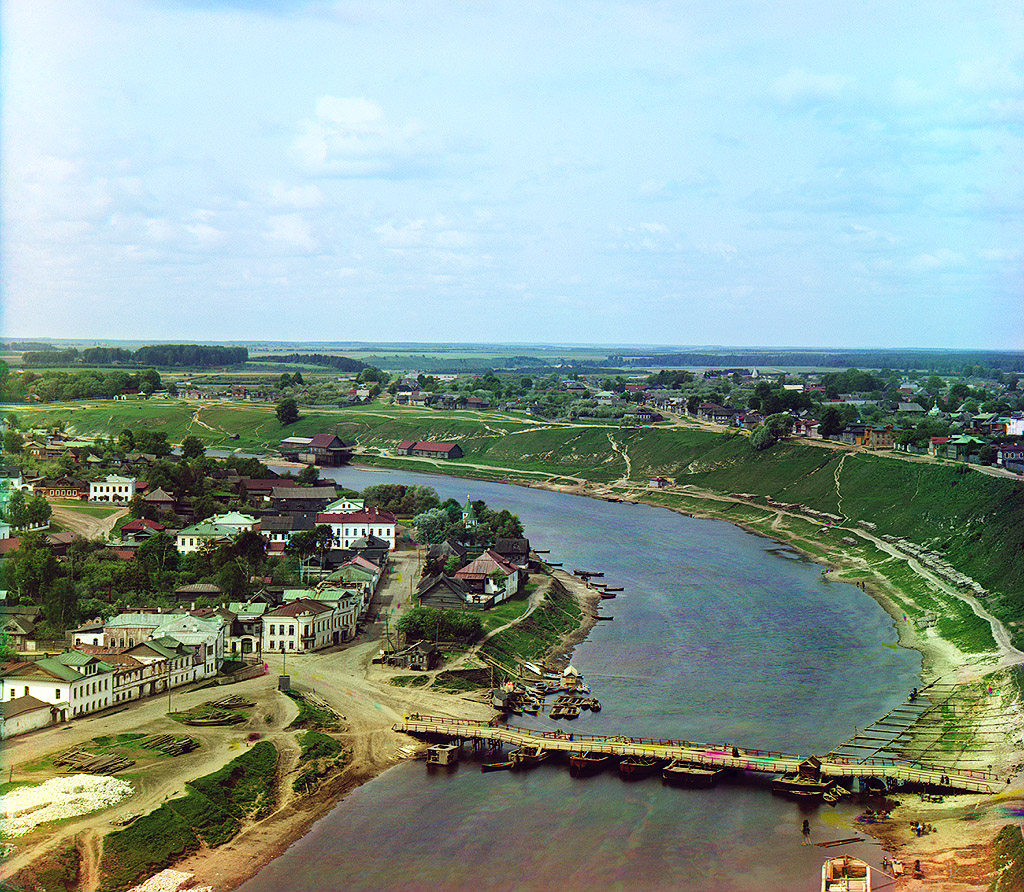|
1st Air Army (USSR)
__NOTOC__ The 1st Air Army (russian: 1-я воздушная армия) was an Air Army in the Soviet Air Force which served during World War II. It was formed on May 10, 1942, within the Soviet Western Front, and renamed the 26th Air Army on January 10, 1949, in the Belorussian Military District. After the war, it was reformed on July 1, 1957, and was active until 1998. Second World War When it was formed, the 1st Air Army was made up of two fighter aviation divisions (with four fighter aviation regiments each), two mixed aviation divisions (with two fighter aviation regiments, two assault aviation regiments and one bombing regiment each) a training aviation regiment, a long-range reconnaissance aviation regiment, a communications squadron, and a night close-range bombing aviation regiment. Structure 1942 May 10, 1942: *201st Fighter Aviation Division *202nd Fighter Aviation Division *203rd Fighter Aviation Division *214th Assault Aviation Division *215th Mixed Aviation D ... [...More Info...] [...Related Items...] OR: [Wikipedia] [Google] [Baidu] |
Soviet Union
The Soviet Union,. officially the Union of Soviet Socialist Republics. (USSR),. was a transcontinental country that spanned much of Eurasia from 1922 to 1991. A flagship communist state, it was nominally a federal union of fifteen national republics; in practice, both its government and its economy were highly centralized until its final years. It was a one-party state governed by the Communist Party of the Soviet Union, with the city of Moscow serving as its capital as well as that of its largest and most populous republic: the Russian SFSR. Other major cities included Leningrad (Russian SFSR), Kiev (Ukrainian SSR), Minsk ( Byelorussian SSR), Tashkent (Uzbek SSR), Alma-Ata (Kazakh SSR), and Novosibirsk (Russian SFSR). It was the largest country in the world, covering over and spanning eleven time zones. The country's roots lay in the October Revolution of 1917, when the Bolsheviks, under the leadership of Vladimir Lenin, overthrew the Russian Provisional Government ... [...More Info...] [...Related Items...] OR: [Wikipedia] [Google] [Baidu] |
894th Fighter Aviation Regiment
The 894th Fighter Aviation Regiment (Russian: 894-й истребительный авиационный полк), Military Unit Number 23257, was a fighter aviation regiment of the Soviet Air Forces in World War II, which then served with the Soviet Air Defence Forces for forty years after the war. From 1945 to 1992, it was based at Ozerne, in Zhitomir Oblast, in the Ukrainian SSR. Taken over by Ukraine in 1992, it was disbanded later that decade. History The regiment was established in April 1942 under the auspices of the 8th Reserve Fighter Aviation Regiment at Bagay-Baranovka in Saratov Oblast, from two separate fighter squadrons. It was later assigned to the 215th Mixed Aviation Division, 1st Air Army, briefly in July 1942, and then to the 9th Fighter Aviation Corps PVO under the Western Air Defense Front (June 1943-May 1945). A single serviceman, Nikolai Abramchuk ( :ru:Абрамчук, Николай Иванович), serving with the regiment, was awarded the Hero of ... [...More Info...] [...Related Items...] OR: [Wikipedia] [Google] [Baidu] |
Hero Of The Soviet Union
The title Hero of the Soviet Union (russian: Герой Советского Союза, translit=Geroy Sovietskogo Soyuza) was the highest distinction in the Soviet Union, awarded together with the Order of Lenin personally or collectively for heroic feats in service to the Soviet state and society. Overview The award was established on 16 April 1934, by the Central Executive Committee of the Soviet Union. The first recipients of the title originally received only the Order of Lenin, the highest Soviet award, along with a certificate (грамота, ''gramota'') describing the heroic deed from the Presidium of the Supreme Soviet of the USSR. Because the Order of Lenin could be awarded for deeds not qualifying for the title of hero, and to distinguish heroes from other Order of Lenin holders, the Gold Star medal was introduced on 1 August 1939. Earlier heroes were retroactively eligible for these items. A hero could be awarded the title again for a subsequent heroic feat with ... [...More Info...] [...Related Items...] OR: [Wikipedia] [Google] [Baidu] |
Guards Unit
Guards units (russian: Гвардия, translit=Gvardiya) were elite units and formations in the Soviet Armed Forces that continue to exist in the Russian Armed Forces and other post-Soviet states. These units were awarded Guards status after distinguishing themselves in wartime service, and are considered to have elite status. The Guards designation originated during World War II, its name coming both from the Russian Imperial Guard, and the old Bolshevik Red Guards. History The title of Guards within the Soviet Armed Forces was first introduced on 18 September 1941, at the direction of the Headquarters of the Supreme High Command ( Stavka). By order No. 308 of the People's Commissar of Defence, the 100th, 127th, 153rd and 161st Rifle Divisions were renamed the 1st, 2nd, 3rd and 4th Guards Rifle Divisions, respectively, for their distinguished service during the 1941 Yelnya Offensive. The Soviet 316th Rifle Division was renamed the 8th Guards Rifle Division on 18 Nove ... [...More Info...] [...Related Items...] OR: [Wikipedia] [Google] [Baidu] |
Kaliningrad Oblast
Kaliningrad Oblast (russian: Калинингра́дская о́бласть, translit=Kaliningradskaya oblast') is the westernmost federal subject of Russia. It is a semi-exclave situated on the Baltic Sea. The largest city and administrative centre of the province (oblast) is the city of Kaliningrad, formerly known as Königsberg. The port city of Baltiysk is Russia's only port on the Baltic Sea that remains ice-free in winter. Kaliningrad Oblast had a population of roughly 1 million in the Russian Census of 2010. The oblast is bordered by Poland to the south, Lithuania to the north and east and the Baltic Sea to the north-west. The territory was formerly the northern part of the Prussian province of East Prussia; the remaining southern part of the province is today part of the Warmian-Masurian Voivodeship in Poland. With the defeat of Nazi Germany in World War II, the territory was annexed to the Russian SFSR by the Soviet Union. Following the post-war migrat ... [...More Info...] [...Related Items...] OR: [Wikipedia] [Google] [Baidu] |
Mamonovo
Mamonovo (russian: Мамоново), prior to 1945 known by its German name Heiligenbeil ( pl, Święta Siekierka or ''Świętomiejsce''; lt, Šventpilis; Prussian: ''Swintamīstan''), is a town in Kaliningrad Oblast, Russia. Population figures: Etymology Mamonovo is named after a Soviet Commander, Nikolay Mamonov, killed in action near Pułtusk on October 26, 1944, who was posthumously awarded the title Hero of the Soviet Union on March 24, 1945. History Under the Teutonic Knights Heiligenstadt was built near an Old Prussian settlement. It was later renamed Heiligenbeil after a holy axe used by Augustinian monks, established in the area by Grand Master Winrich von Kniprode after the Battle of Rudau, to cut down an oak tree worshiped by pagan Prussians. It came under the bishopric of Warmia, then to the territory of Natangia. Since 1440, the town was a founding member of the anti-Teutonic Prussian Confederation, upon the request of which, Polish King Casimir IV J ... [...More Info...] [...Related Items...] OR: [Wikipedia] [Google] [Baidu] |
Military Transport Aviation
Military Transport Aviation Command is part of the Russian Air Force. Military Transport Aviation Command (russian: Кома́ндование вое́нно-тра́нспортной авиа́ции (ВТА) — '' Komandovaniye voyenno-transportnoy aviatsii (VTA)'') was a major component of the former Soviet Air Forces, active from the Cold War period, through the dissolution of the Soviet Union, to 1998–1999. In 1999–2009 it was reduced in status to the 61st Air Army of the Supreme High Command (''61 Vozdushnaya Armiya VGK''). The 61st Air Army itself was initially formed on 10 January 1949 by renaming the 3rd Air Army. In 2009 the 61st Air Army was renamed the Command of Military Transport Aviation. Its headquarters is located in Moscow. The VTA traces its history to the formation of the first transport aviation unit in the Leningrad Military District on 1 June 1931. In 1955–56 air transport units were removed from the Soviet Airborne Troops and the VTA itself was cr ... [...More Info...] [...Related Items...] OR: [Wikipedia] [Google] [Baidu] |
Chernyakhovsk
Chernyakhovsk (russian: Черняхо́вск) – known prior to 1946 by its German name of (Old Prussian: Instrāpils, lt, Įsrutis; pl, Wystruć) – is a town in the Kaliningrad Oblast of Russia, where it is the administrative center of Chernyakhovsky District. Located at the confluence of the Instruch and Angrapa rivers, which unite to become the Pregolya river below Chernyakhovsk, the town had a population in 2017 of 36,423. History Chernyakhovsk was founded in 1336 by the Teutonic Knights on the site of a former Old Prussian fortification when Dietrich von Altenburg, the Grand Master of the Teutonic Knights, built a castle called ''Insterburg'' following the Prussian Crusade. During the Teutonic Knights' Northern Crusades campaign against the Grand Duchy of Lithuania, the town was devastated in 1376. The castle had been rebuilt as the seat of a Procurator and a settlement also named ''Insterburg'' grew up to serve it. In 1454, Polish King Casimir IV Jagiellon incorpor ... [...More Info...] [...Related Items...] OR: [Wikipedia] [Google] [Baidu] |
Operation Mars
Operation Mars (Russian: Операция «Марс»), also known as the Second Rzhev-Sychevka Offensive Operation (Russian: Вторая Ржевско-Сычёвская наступательная операция), was the codename for an offensive launched by Soviet forces against German forces during World War II. It took place between 25 November and 20 December 1942 around the Rzhev salient in the vicinity of Moscow. The offensive was a joint operation of the Soviet Western Front and Kalinin Front co-ordinated by Georgy Zhukov. The offensive was one in a series of particularly-bloody engagements that are collectively known in Soviet and Russian histories as the Battles of Rzhev, which occurred near Rzhev, Sychevka and Vyazma between January 1942 and March 1943. The battles became known as the "Rzhev meat grinder" ("Ржевская мясорубка") for their huge losses, particularly on the Soviet side. For many years, they were relegated to a footnote in Sovi ... [...More Info...] [...Related Items...] OR: [Wikipedia] [Google] [Baidu] |
Rzhev
Rzhev ( rus, Ржев, p=ˈrʐɛf) is a types of inhabited localities in Russia, town in Tver Oblast, Russia, located southwest of Staritsa (town), Tver Oblast, Staritsa and from Tver, on the highway and railway connecting Moscow and Riga. It is the uppermost town situated on the Volga River. Population: History Rzhev was founded in the Middle Ages and rivals Toropets as the oldest town in the region. Rzhevians usually point out that their town is mentioned in the Novgorod Republic, Novgorod laws as early as 1019. Their neighbors from Toropets, on the other hand, give more credence to Rzhev's first mention in a major chronicle under 1216, when it was in possession of Mstislav the Bold, Prince of Toropets. Whatever the truth may be, it is clear that medieval Rzhev was bitterly contested by three regional powers—the Novgorod Republic, the Principality of Smolensk, and the Grand Principality of Vladimir-Suzdal. Following the Mongol invasion of Russia, Mongol invasion, Rzhev pa ... [...More Info...] [...Related Items...] OR: [Wikipedia] [Google] [Baidu] |
Gzhatsk
Gagarin (russian: Гага́рин), known until 1968 as Gzhatsk (), is a town and the administrative centre of Gagarinsky District of Smolensk Oblast, Russia, located on the Gzhat River, northeast of Smolensk, the administrative centre of the oblast. Population: The town's former name is from that of the Gzhat River, which is of Baltic origin (cf. Old Prussian ''gudde'', meaning "forest"). Climate Gagarin has a warm-summer humid continental climate (''Dfb'' in the Köppen climate classification). History In 1718, a village on the territory of modern Gagarin was transformed by a decree of Peter the Great to a transshipment landing stage (called Gzhatsky landing stage). From the mid-18th century, Gzhatsk was a ''sloboda'', and in 1776, by a decree by Catherine the Great, it was granted uyezd town status and a coat of arms showing "a barge loaded with bread ready for departure, on a field argent", meaning that the town was a good landing stage for grain. The town was b ... [...More Info...] [...Related Items...] OR: [Wikipedia] [Google] [Baidu] |
Yukhnov
Yukhnov (russian: Ю́хнов) is a town and the administrative center of Yukhnovsky District in Kaluga Oblast, Russia, located on the Kunava River (Oka's basin) northwest of Kaluga, the administrative center of the oblast. Population: History It has been known since 1410. The "Town" status was granted to it in the year 1777.During the Second World War the town was occupied by the Germans from October 5, 1941 to March 5, 1942. Administrative and municipal status Within the framework of administrative divisions, Yukhnov serves as the administrative center of Yukhnovsky District, to which it is directly subordinated. As a municipal division, the town A town is a human settlement. Towns are generally larger than villages and smaller than cities, though the criteria to distinguish between them vary considerably in different parts of the world. Origin and use The word "town" shares an ori ... of Yukhnov is incorporated within Yukhnovsky Municipal District as Yukhnov U ... [...More Info...] [...Related Items...] OR: [Wikipedia] [Google] [Baidu] |





